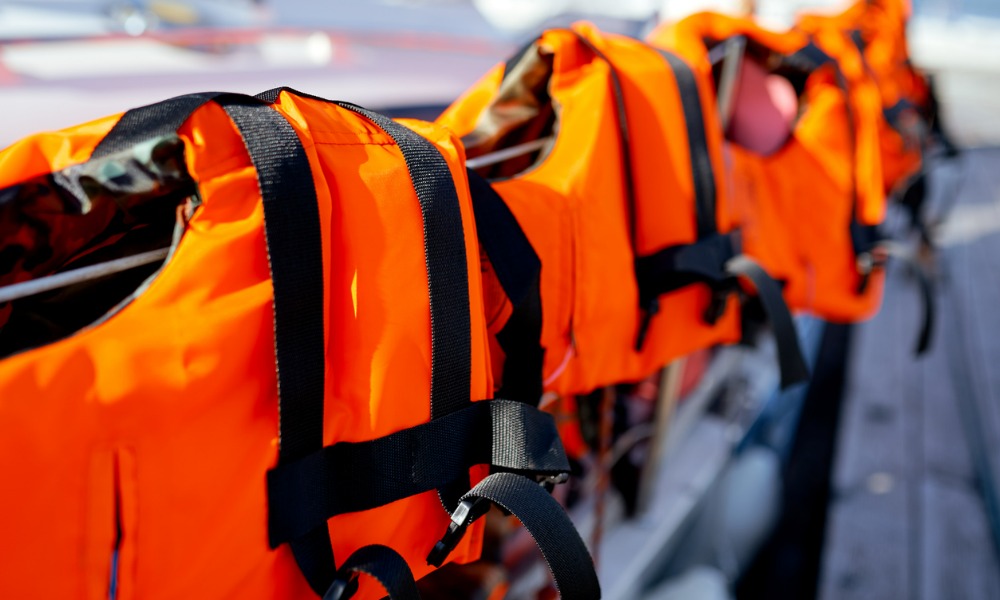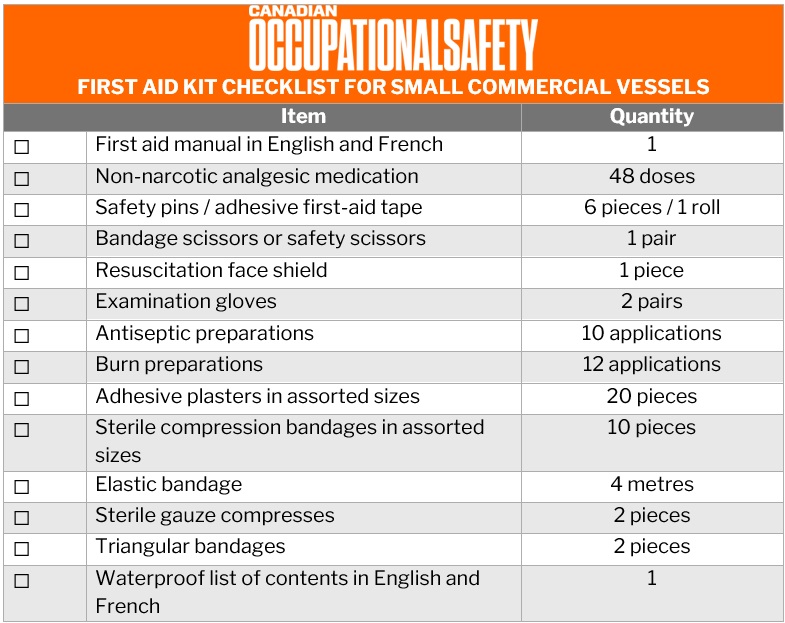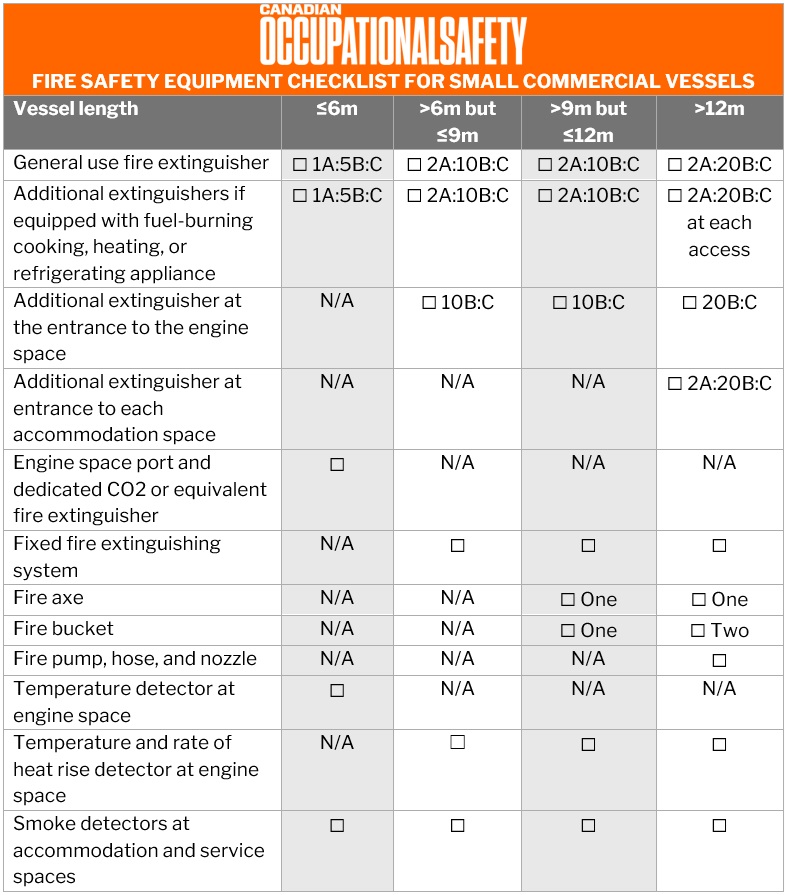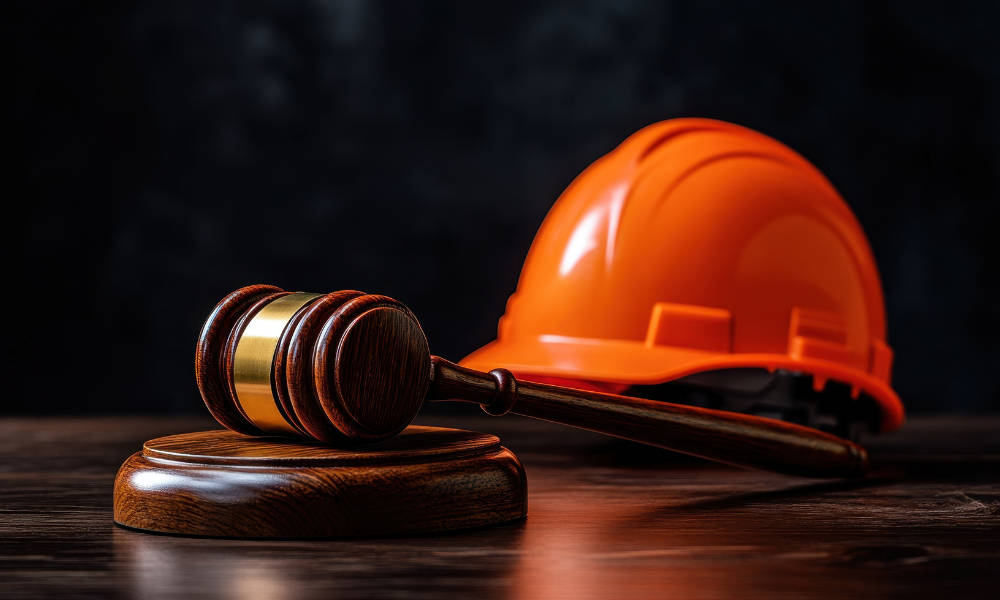The right boat safety equipment plays a key role in keeping your crew and passengers safe. Find out the requirements for small commercial vessels in this guide

Owners and operators of commercial vessels in Canada are legally responsible for ensuring the safety of their watercrafts and everyone on board. A key part of this is making sure their vessels have the right boat safety equipment.
In this article, Canadian Occupational Safety gives you a rundown of the different safety devices and equipment small commercial vessels are required by law to have. We will provide a brief overview of each category and list our picks of the best available products in the market. We also prepared a comprehensive boat safety equipment checklist that you can download and save for easy reference.
If you’re wondering about what safety tools and devices you need to operate a commercial watercraft, you’ve come to the right place. Learn more about the required safety equipment for boats in Canada in this guide.
What types of boat safety equipment are required in Canada?
Canada has put down regulations to ensure watercraft operators and passengers remain safe in the water. These laws include the Small Vessels Regulations that require five types of boat safety equipment to be present aboard watercrafts at all times. We also listed our top picks for each category to give you an idea of what’s available on the market.
1. Life-saving appliances
Personal life-saving appliances are designed to provide the crew and passengers support if they fall overboard or must abandon ship. This category of boat safety equipment comes in several types:
Lifejackets
Lifejackets are designed to help a person maintain a breathing position while in the water. They come in various sizes to fit different passengers. As a rule, children cannot wear lifejackets designed for adults. They must also weigh at least 9kg to wear one.
It is your responsibility as a watercraft owner or operator to ensure that these personal life-saving appliances deliver the required protection for your passengers and crew. Lifejackets are often confused with personal flotation devices or PFDs. To be sure that you’re providing your passengers with lifejackets, always check the stamp or label. Only lifejackets approved by Transport Canada can be used in commercial watercrafts.
Here are our picks for the best lifejackets for small commercial vessels. All products are Safety of Life at Sea (SOLAS) approved.
- Baltic Legend 305 MED automatic lifejacket
- Datrex VSG MK10 lifejacket
- Plastimo lifejacket
- Spinlock Duro 275N lifejacket
- Viking Yousafe Multi lifejacket
It’s important to distinguish between lifejackets and PFDs as only the former meet Transport Canada’s requirements for life-saving equipment on commercial vessels. Lifejackets have two main advantages over PFDs:
- they are more buoyant
- they are better at keeping a person’s mouth out of water
Another distinguishing feature of lifejackets is that they are bulkier than PFDs, making them less comfortable to wear at all times. Some PFDs, meanwhile, are designed to be worn even while working.
Liferafts
Liferafts are inflatable life-saving equipment designed to keep people afloat and provide shelter during emergency situations at sea. Liferafts are the preferred rescue systems for small vessels operating in waters below 15°C.
Watercrafts more than 8.5 metres long are required to carry at least one liferaft. The capacity for this type of boat safety equipment must be enough to carry everyone on board. Inflatable liferafts must show their maximum capacity and the date they were last serviced.
Here are our top picks for the best liferafts for small commercial vessels:
- Crewsaver commercial liferaft
- Elliot commercial liferaft
- Great Circle Oceanmaster liferaft
- Revere Aero compact liferaft
- Survitec Zodiac commercial liferaft
Your crew must have the right training and be ready to launch liferafts and other life-saving equipment at a moment’s notice.
Learn more about your industry’s personal protective equipment requirements, including those for personal flotation devices, in this essential guide to personal safety equipment.
2. Vessel safety equipment
Vessel safety equipment is designed to keep the watercraft in good working condition, so that the crew and passengers don’t have to use personal life-saving appliances. There are three types of vessel safety equipment required by Transport Canada for small commercial boats.
Anchors and oars
Oars and anchors provide a means for you and your crew to prevent your vessel from drifting if the engine stops working. If your boat is less than 9 metres long, you’re required to have a paddle or two oars and rowlocks that can propel the vessel manually. If it’s longer, you should have an anchor with a length of rope that suits the size of the watercraft.
Here are some of our top picks for the best oars and anchors for small commercial vessels:
Oars
- Crooked Creek heavy-duty oars
- Oceansouth 78in heavy-duty oars
- Sevylor lightweight aluminum boat oars
Anchors
- Better Boat anchor and chain kit
- Extreme Max 3006.6548 BoatTector anchor kit
- Marine System fluke anchor kit
Bailers and manual bilge pumps
If your vessel is less than 9 metres long, you can carry a bailer instead of a bailer pump. A bailer or manual bilge pump allows you to remove water from the hull. This boat safety equipment must be made of metal or plastic, can hold at least 750 millilitres, and has an opening measuring at least 65 square centimetres.
These are our top choices for the best bailers for small commercial vessels:
- Best Marine and Outdoors manual bilge pump
- Hikula manual bilge pump for boats
- SeaSense boat bailer safety kit
Bilge pumps
Apart from a manual bilge pump, vessels measuring more than 6 metres in length must carry automatic bilge pumps that meet construction requirements. Here are our top picks:
- Attwood 4505-7 Sahara S500 automatic bilge pump
- Maxzone automatic submersible boat bilge pump
- Oasis Marine automatic bilge pump
3. Distress-alerting equipment
This type of boat safety equipment is designed to let others know that you need help. There are three kinds of distress-alerting devices that Transport Canada requires small commercial vessels to have:
Flashlight
All small commercial vessels are required to carry a watertight flashlight. Here are our some of our top picks:
- Dorcy water-resistant LED flashlight
- Nightsearcher LED searchlight
- Yierblue rechargeable spotlight
Flares
Flares must be approved by Transport Canada, which should be seen in the markings. The label must also show the expiration date. Flares expire four years after the date of manufacture. This type of boat safety equipment is hazardous and must be properly disposed of once it expires.
There are four main types of flares:
- rocket parachute flares (Type A): launching rocket ignites flare and projects parachute with flare; reaches up to 300 metres in height with visibility of up to 20 nautical miles
- multi-star flares (Type B): produces two or more bright red stars in rapid succession for a maximum of 15 seconds; visibility up to 12 nautical miles
- hand flares (Type C): hand-held red flare that burns for at least 1 minute
- smoke signal (Type D): can be either hand-held, which produces a dense orange-coloured smoke for at least 1 minute, or buoyant, which produces a dense orange-coloured smoke for at least 3 minutes when floating in calm water
The number and type of flare required depends on the size of the commercial vessel. Here’s a quick reference from Transport Canada:

Here are our top choices for the best flares for small commercial vessels:
- Ikaros red rocket parachute flare
- Orion Red Parachute SOLAS signal rocket flare
- Pains Wessex SOLAS Para Red rocket parachute flare
Sound-signalling device
A sound-signalling device can be a pealess whistle, or a compressed gas or electric horn. It must meet the requirements of the Collision Regulations. Here are our top choices:
- Five Oceans Marine Electric dual trumpet horn
- Hornblasters The Battleship KM-135 air horn
- Seachoice stainless steel dual trumpet horn
4. First aid kit
First aid kits must meet the requirements set out in the Maritime Occupational Safety and Health Regulations or provincial regulations on workers’ compensation, and the Small Vessels Regulations. Here’s a checklist of what a first aid kit for small commercial vessels must contain. All items must be packed in a waterproof container.

Here are our picks for the top first aid kits for small commercial vessels:
- 72 Hours Ready First Aid - 200 Pieces Essential Care first aid kit
- First Aid Canada Federal Maritime small vessel first aid kit
- Servoxy Lightning X Premium medical first aid kit
5. Fire safety equipment
Small commercial vessels must be equipped with the right type of fire extinguishers and fire detectors. The type and number of fire extinguisher required depends on the size of the boat.
Fire extinguishers are classed based on the fire they can put out. These are shown by the letters A to D and K.
Here’s a quick reference:
- Class A: wood, cloth, paper, rubber, and some plastics
- Class B: flammable liquids, gases, greases, and paint
- Class C: live electrical wires or equipment
- Class D: combustible metals such as magnesium, sodium, or potassium
- Class K: combustible cooking products such as animal or vegetable oil
These letters are often paired with a number. The number represents the relative amount of fire the extinguisher can put out. Equipment marked 4B, for instance, can put out four times a B-class fire.
Here are our top choices for the top fire extinguishers for small commercial vessels:
- Amerex B500 dry chemical fire extinguisher
- First Alert PRO5 rechargeable heavy-duty fire extinguisher
- Kidde Mariner PWC marine fire extinguisher
Read more: Fire safety equipment every job site needs
Boat safety equipment: downloadable checklists
Here’s a checklist of the different types of boat safety equipment required for small commercial vessels. These are based on the requirements set by Transport Canada through the Small Vessels Regulations.
You can download the checklists and tick the items that apply to your vessel size. First aid kits have uniform requirements, regardless of the size of the boat, that’s why we prepared a separate checklist above.


Having the right boat safety equipment can go a long way in ensuring that your vessel, and its crew and passengers are protected against various sea hazards.
Visit our Product Resources page for more news and information about boat safety equipment requirements and regulations in Canada.
Did you find our essential boat safety equipment checklist helpful? Let us know in the comments.





